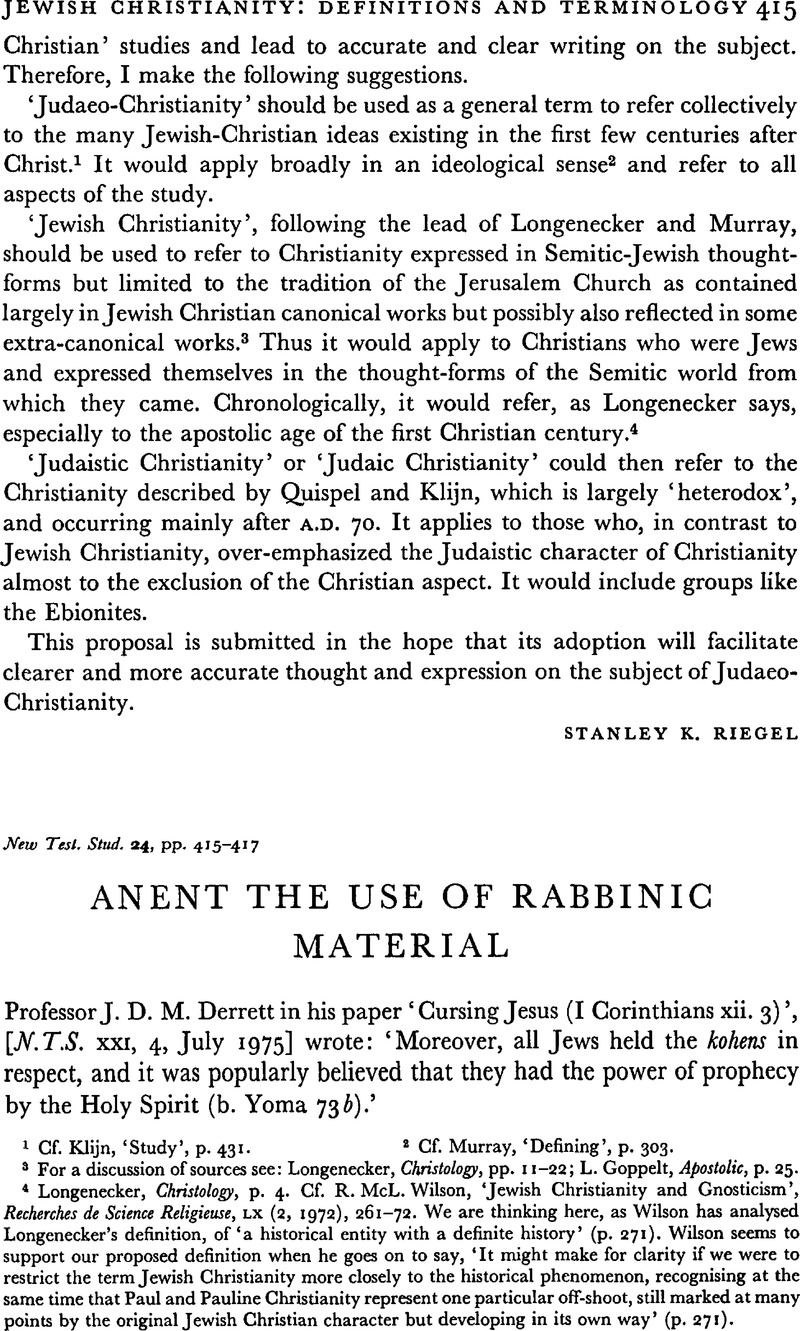Article contents
Anent the Use of Rabbinic Material
Published online by Cambridge University Press: 05 February 2009
Abstract

Information
- Type
- Short Studies
- Information
- Copyright
- Copyright © Cambridge University Press 1978
References
1 Cf. Klijn, , ‘Study’, p. 431.Google Scholar
2 Cf. Murray, , ‘Defining’, p. 303.Google Scholar
3 For a discussion of sources see: Longenecker, , Christology, pp. 11–22Google Scholar; Goppelt, L., Apostolic, p. 25.Google Scholar
4 Longenecker, , Christology, p. 4. cfGoogle Scholar. Wilson, R. McL., ‘Jewish Christianity and Gnosticism’, Recherches de Science Religieuse, 60 (2, 1972), 261–72Google Scholar. We are thinking here, as Wilson has analysed Longenecker's definition, of ‘a historical entity with a definite history’ (p. 271). Wilson seems to support our proposed definition when he goes on to say, ‘It might make for clarity if we were to restrict the term Jewish Christianity more closely to the historical phenomenon, recognising at the same time that Paul and Pauline Christianity represent one particular off-shoot, still marked at many points by the original Jewish Christian character but developing in its own way’ (p. 271).
- 1
- Cited by

